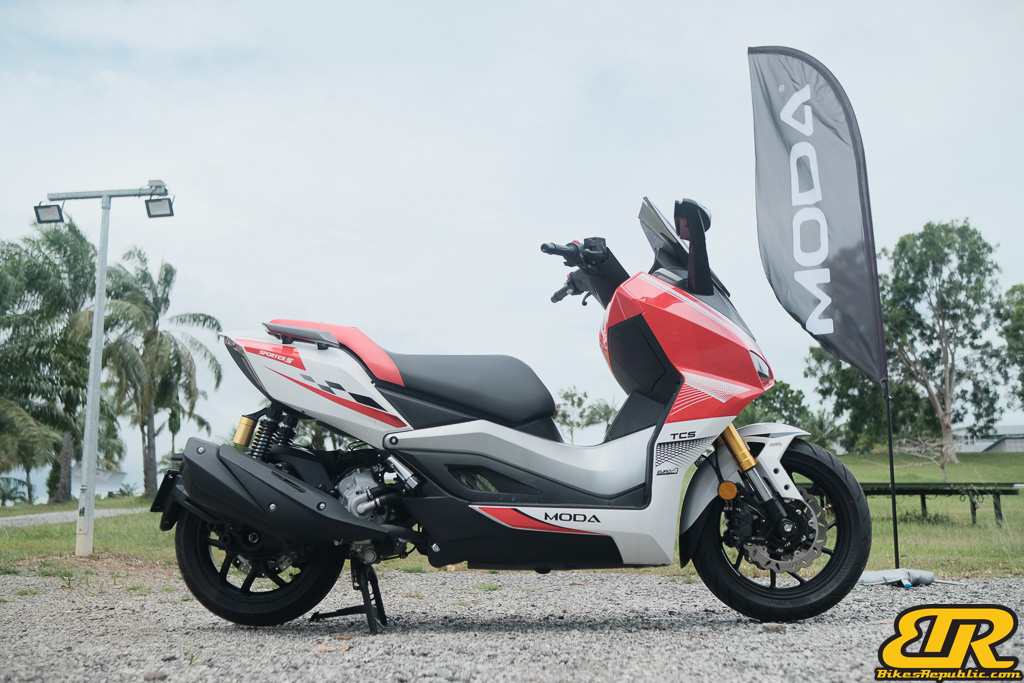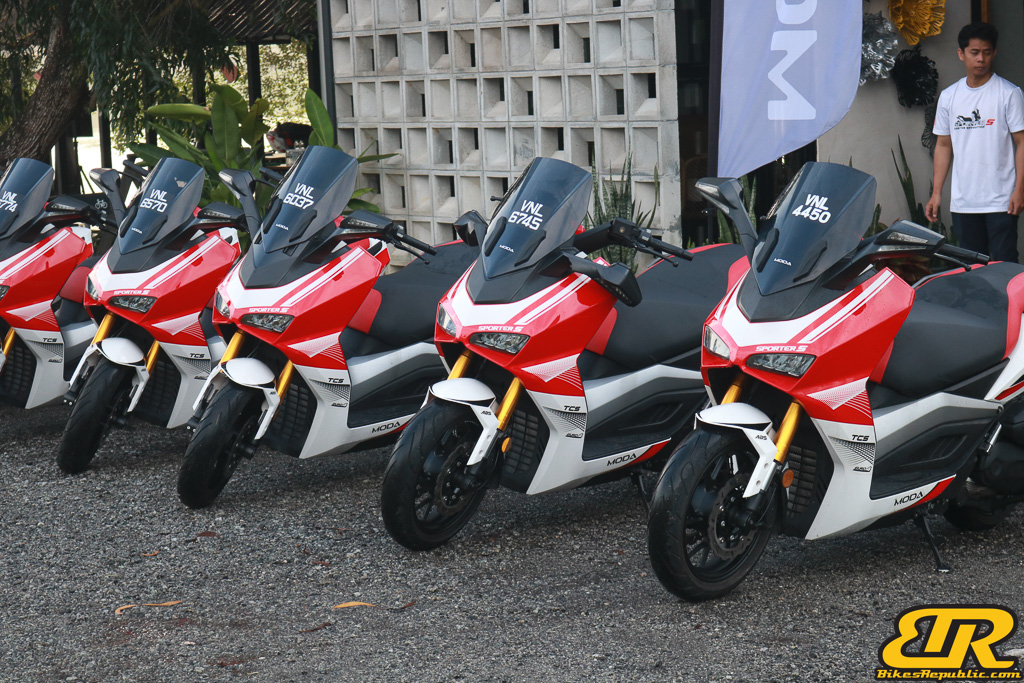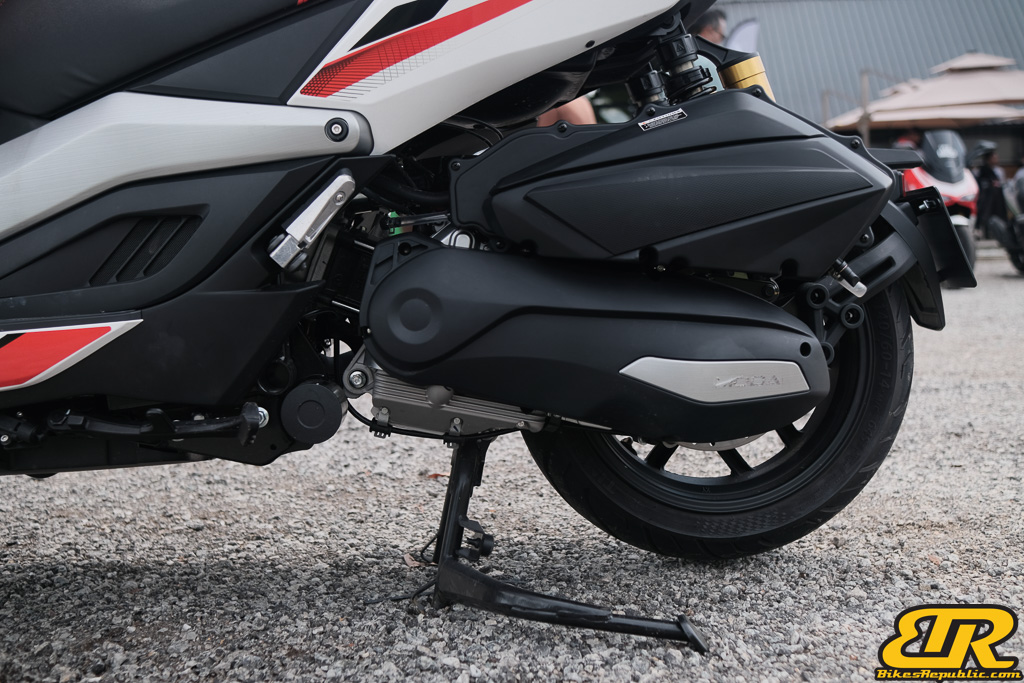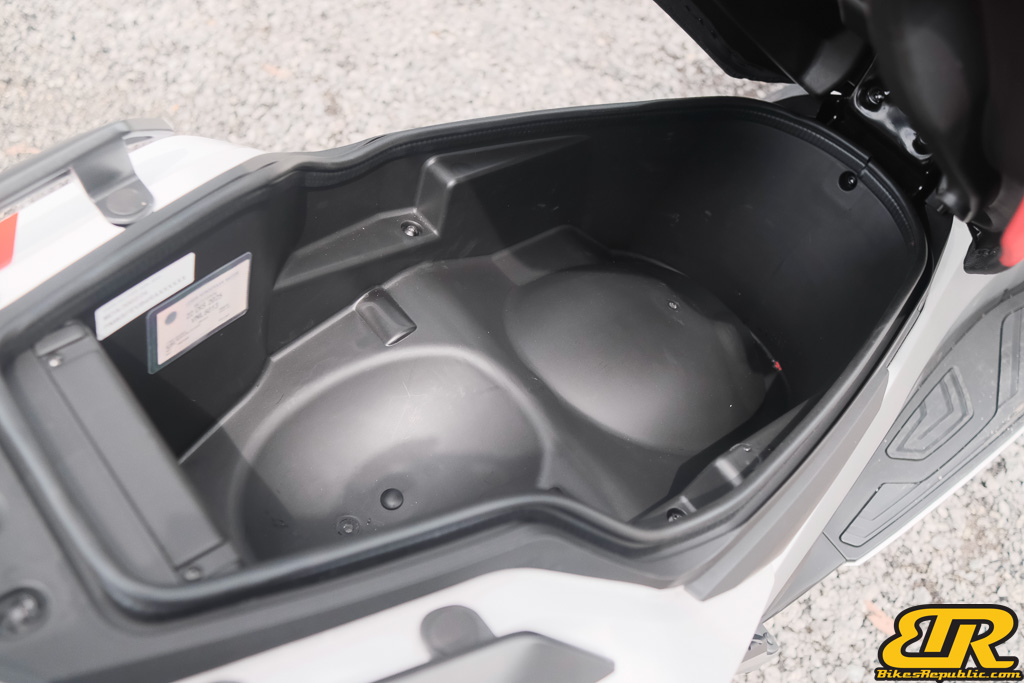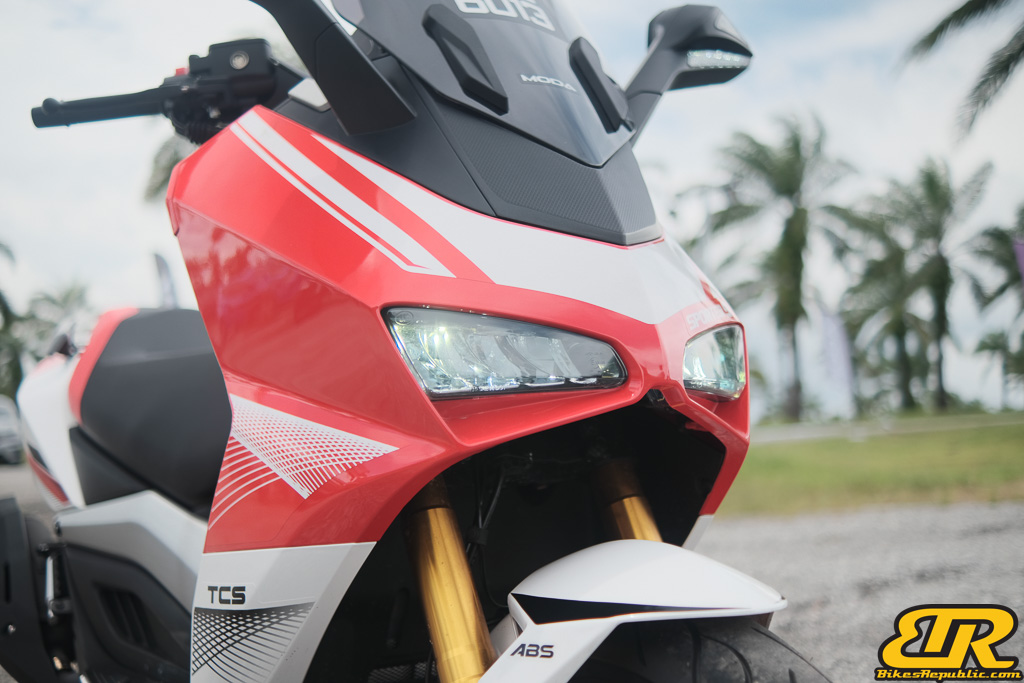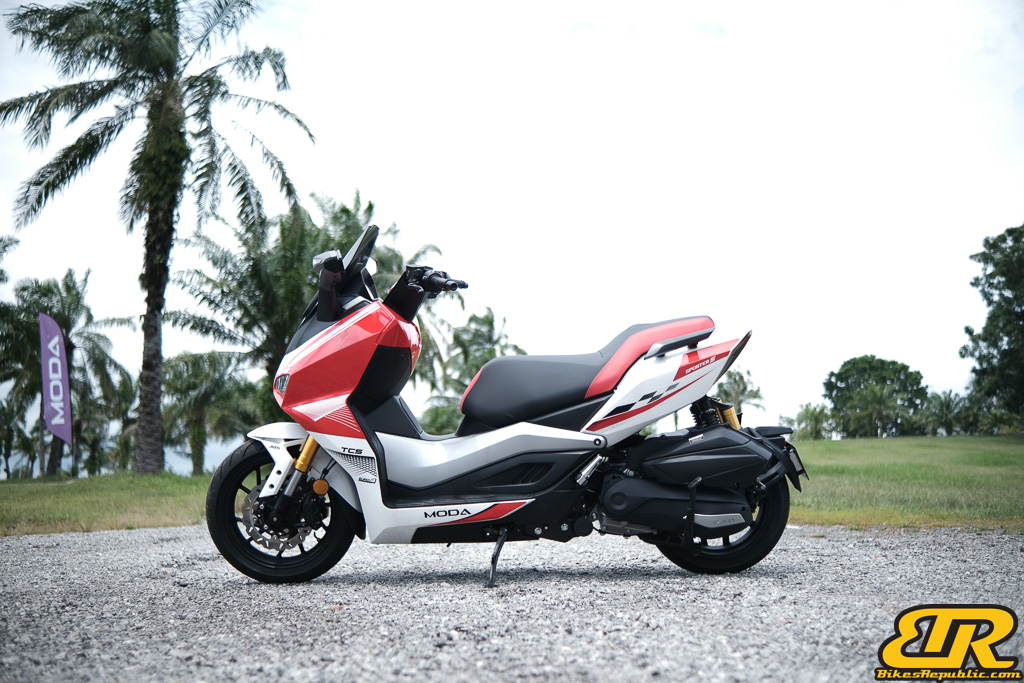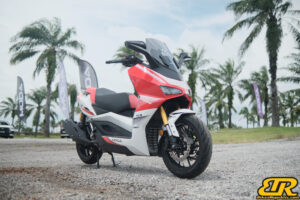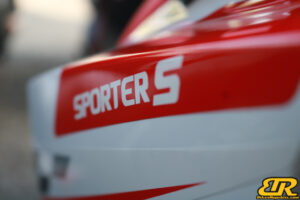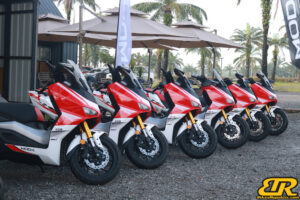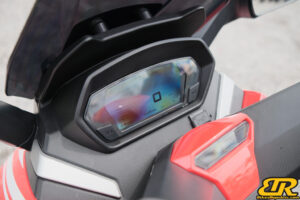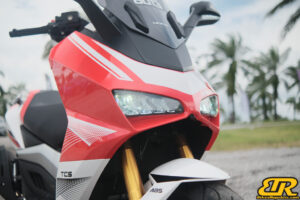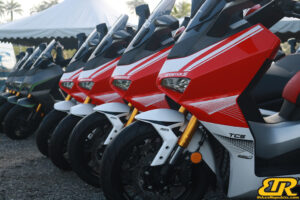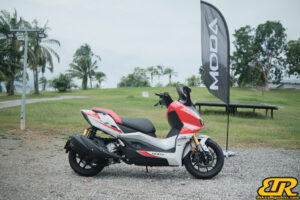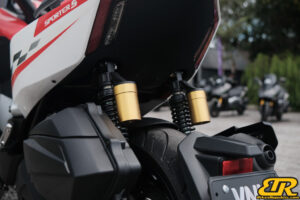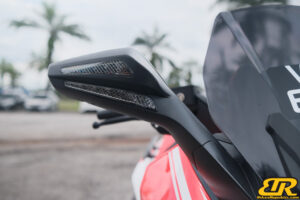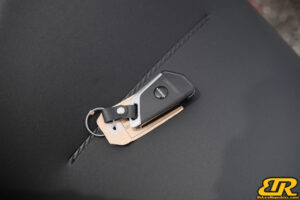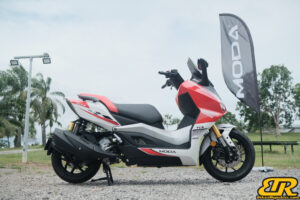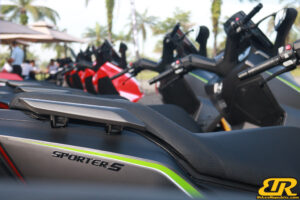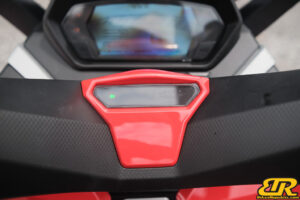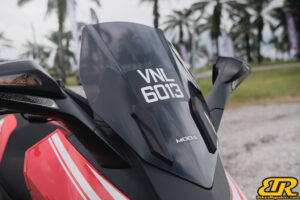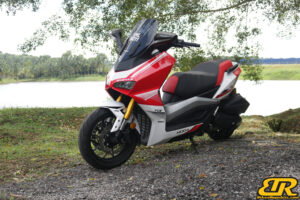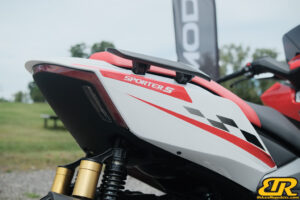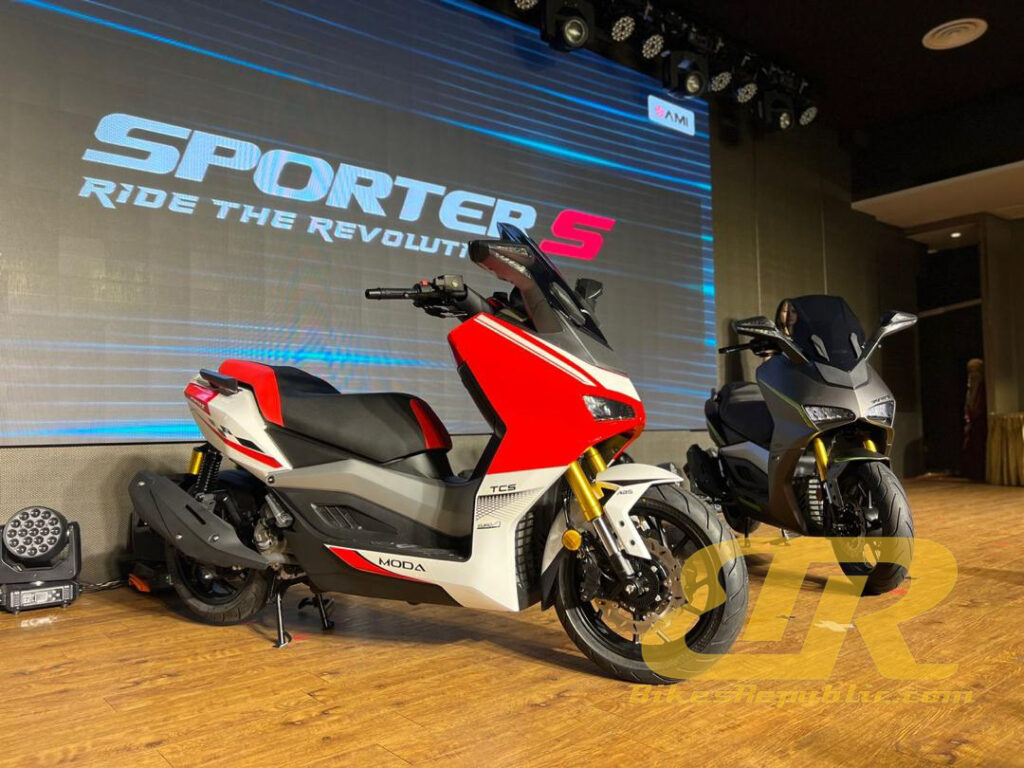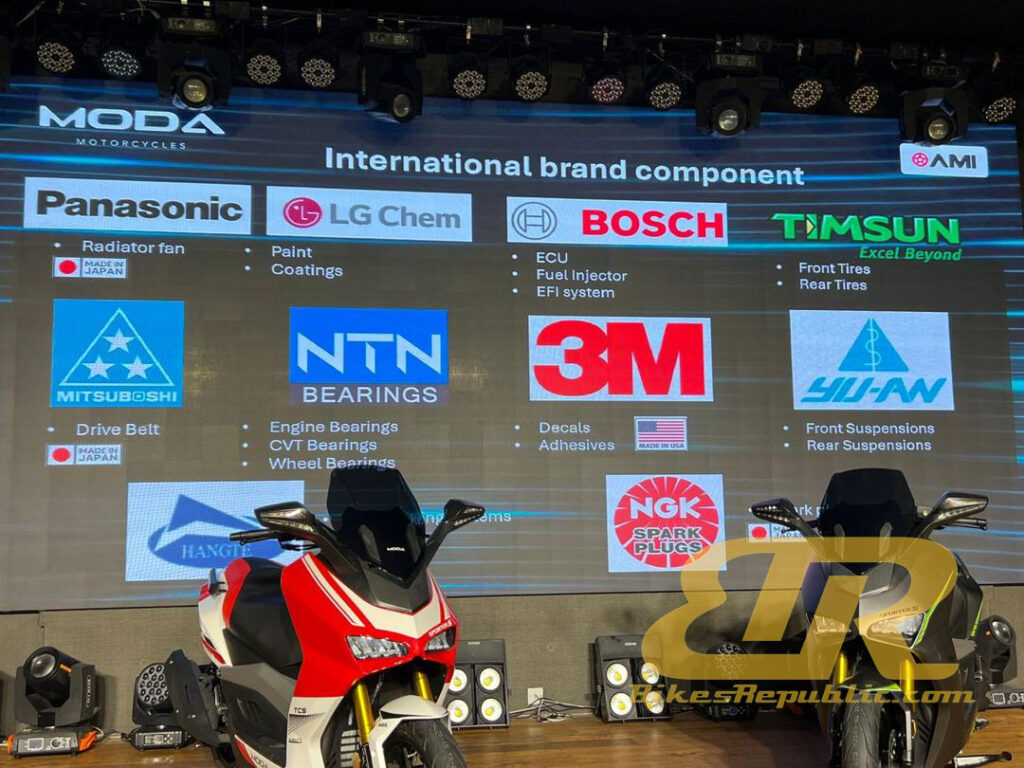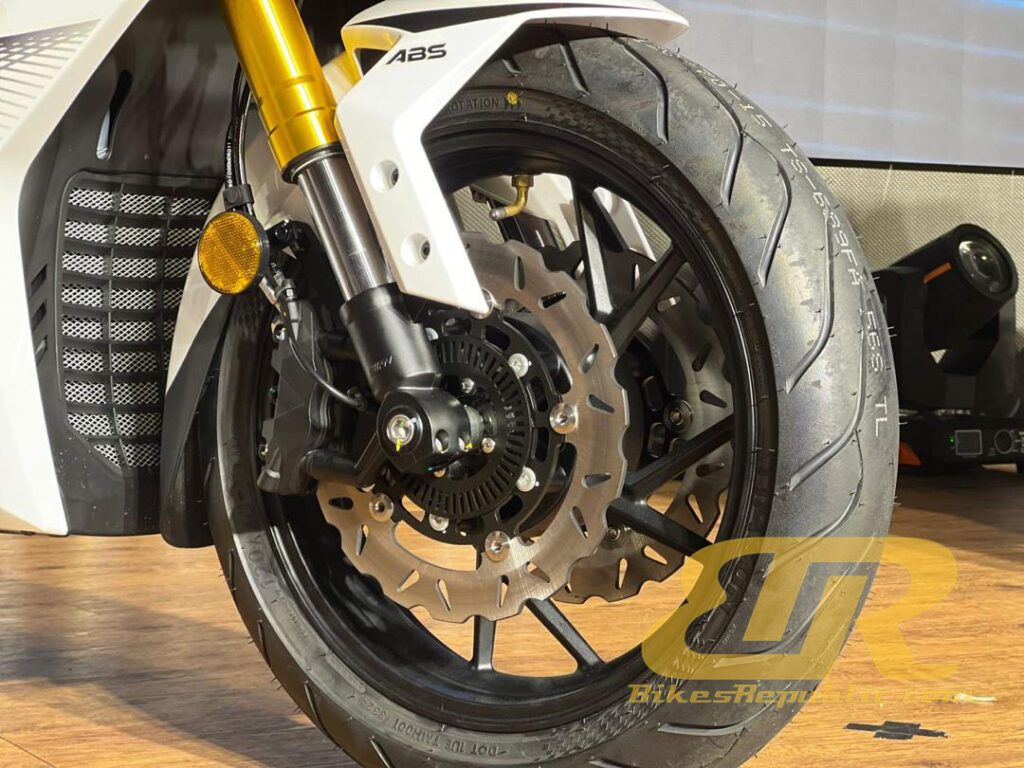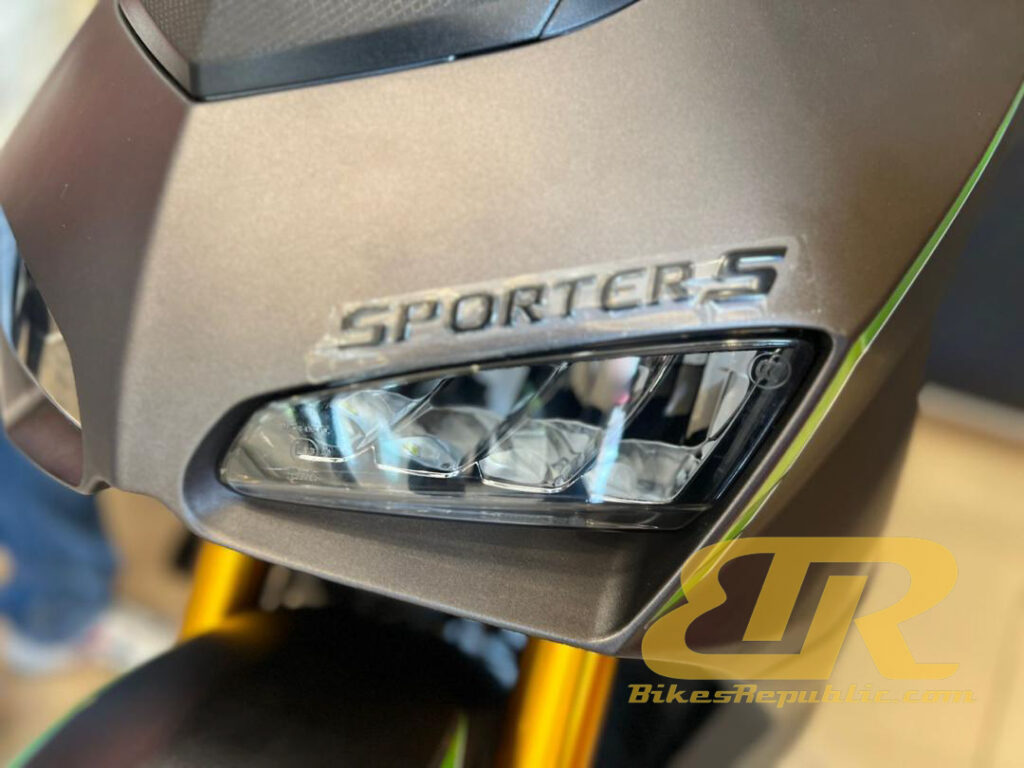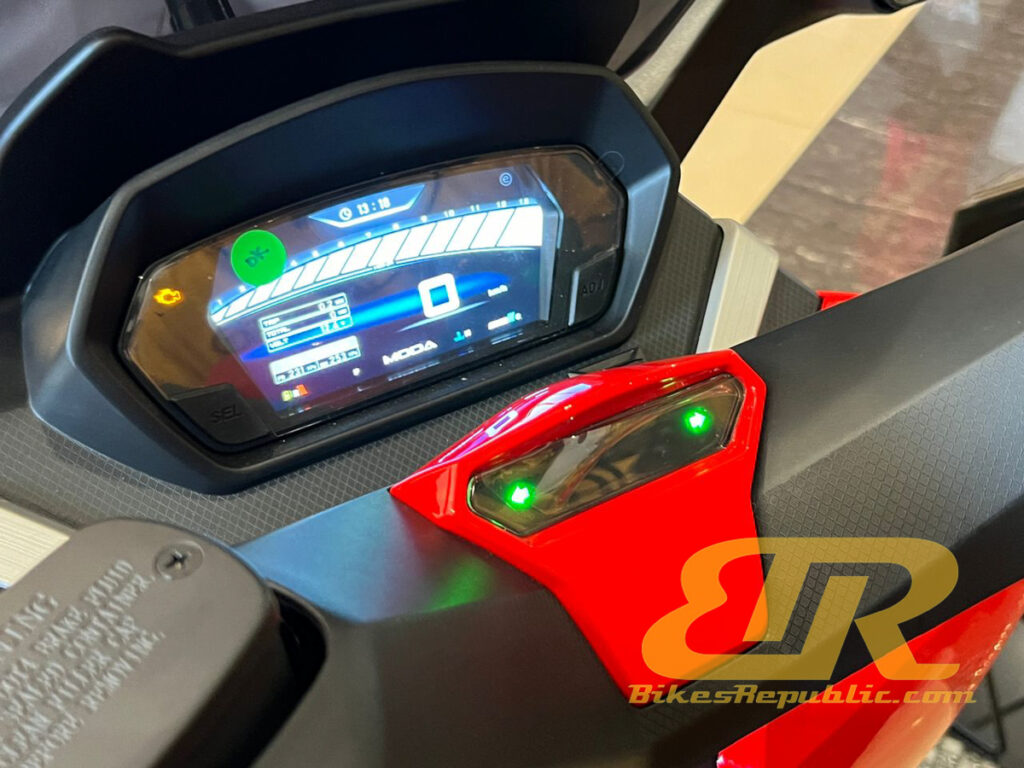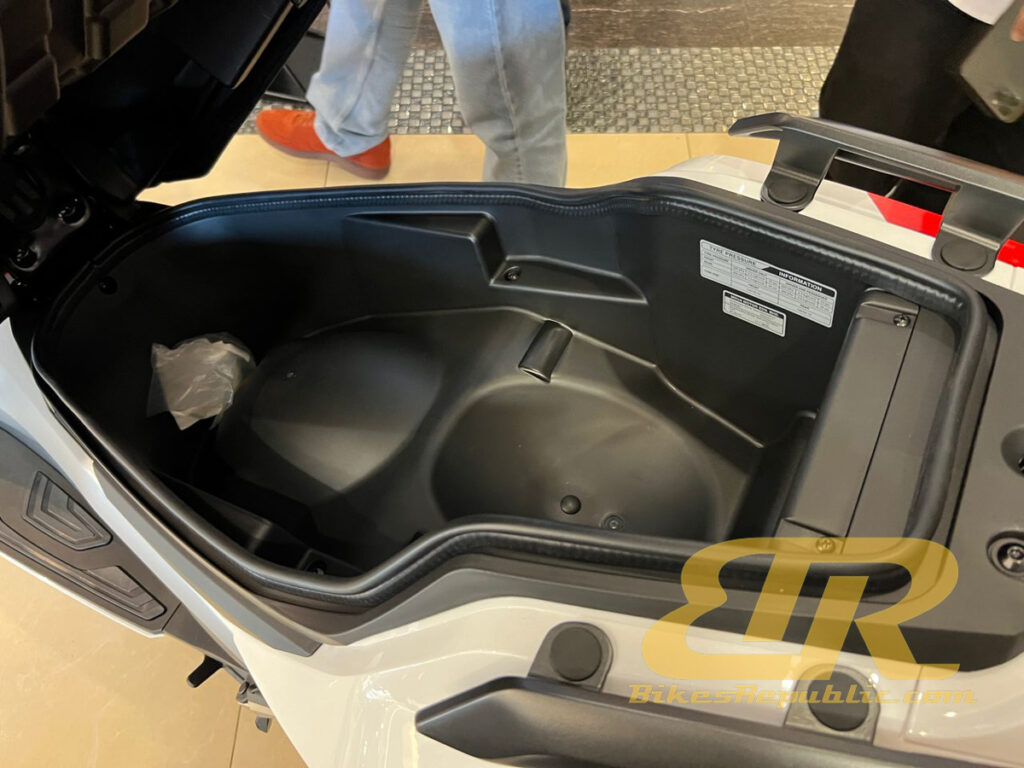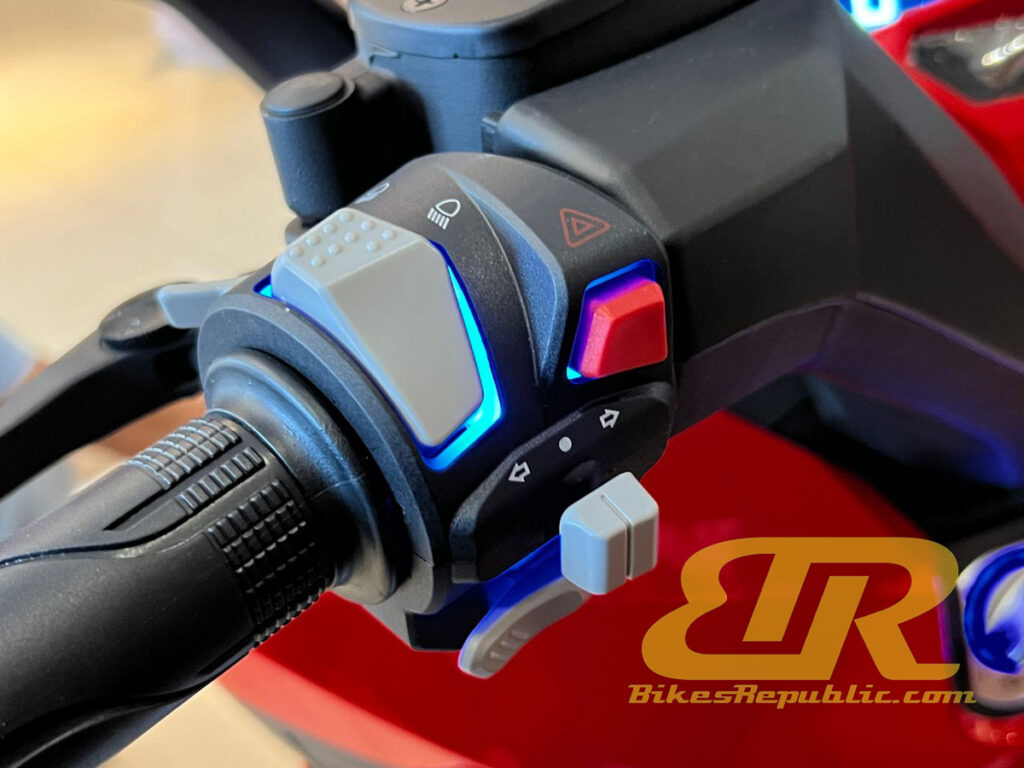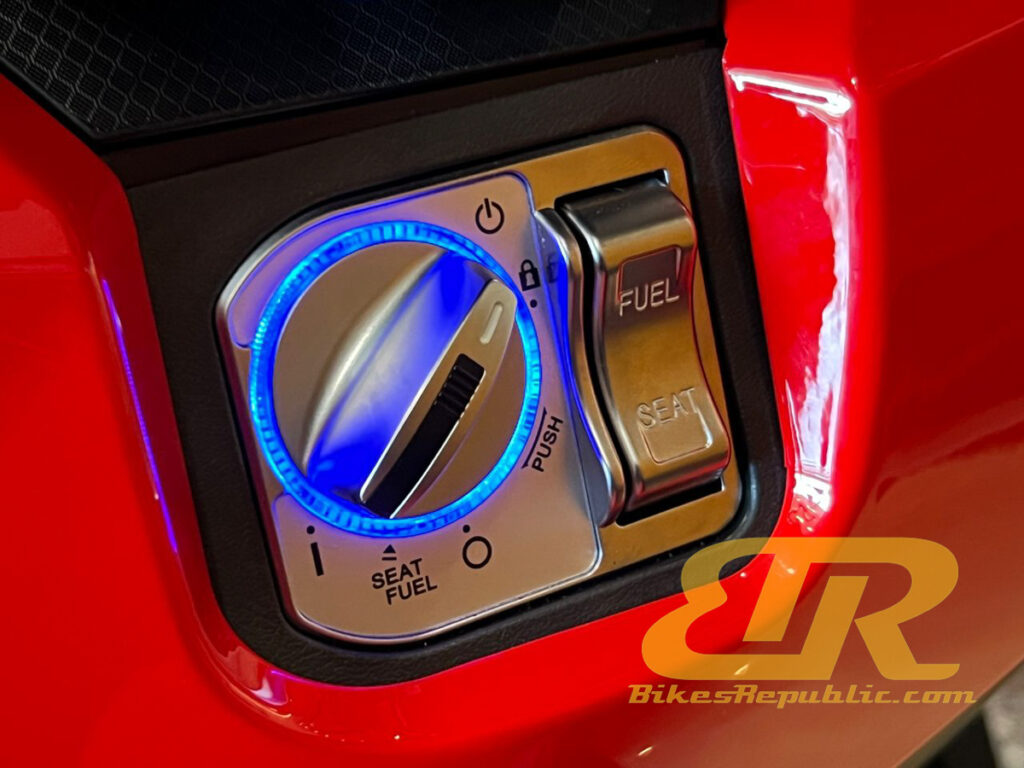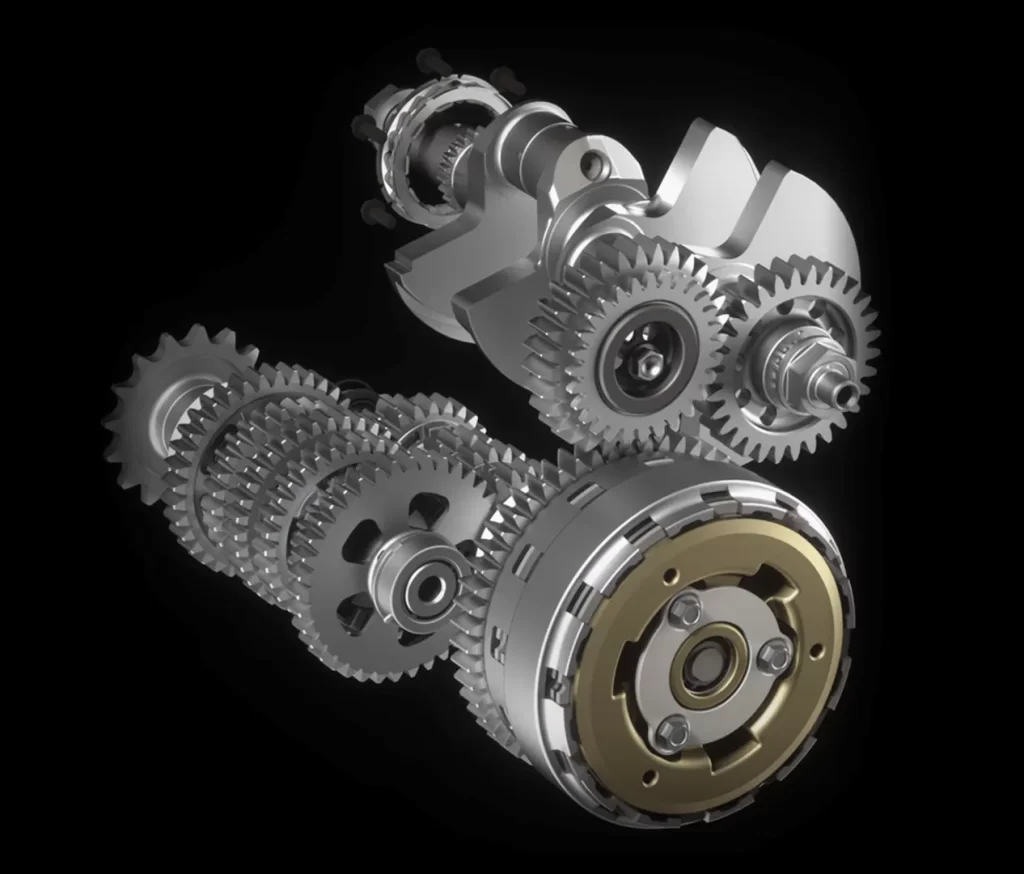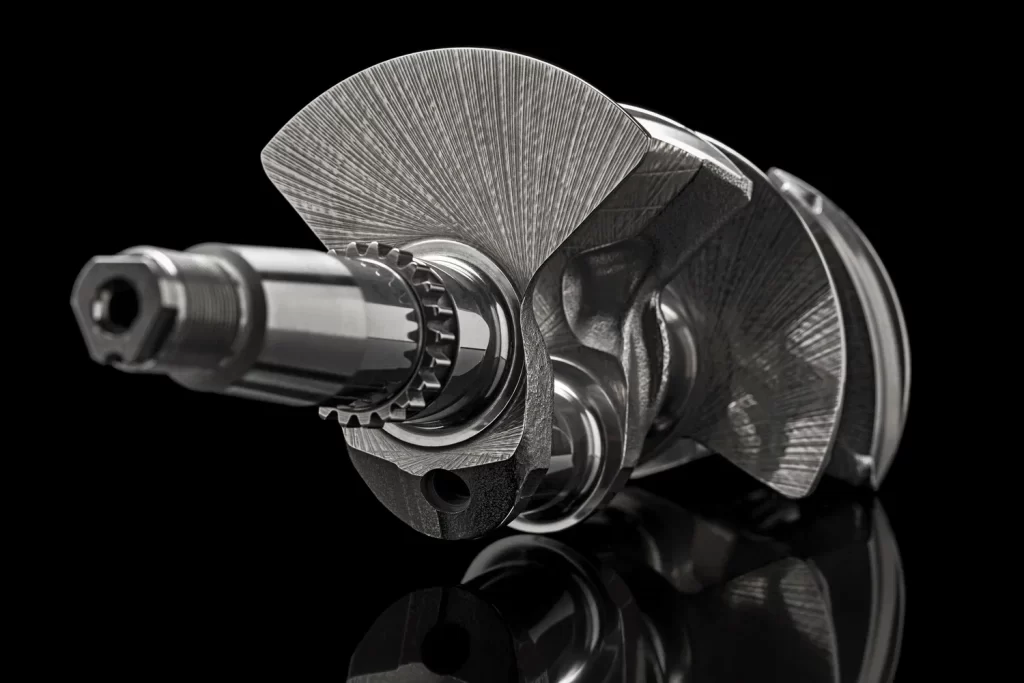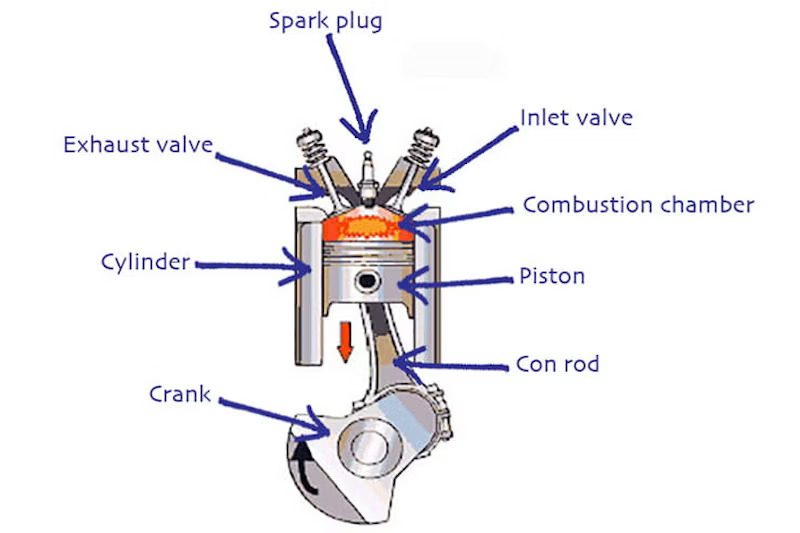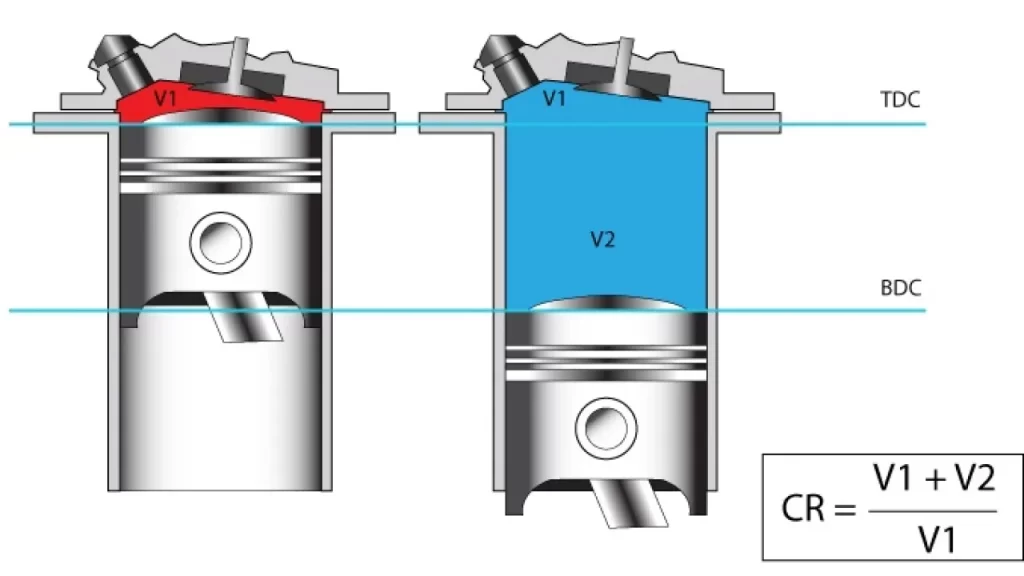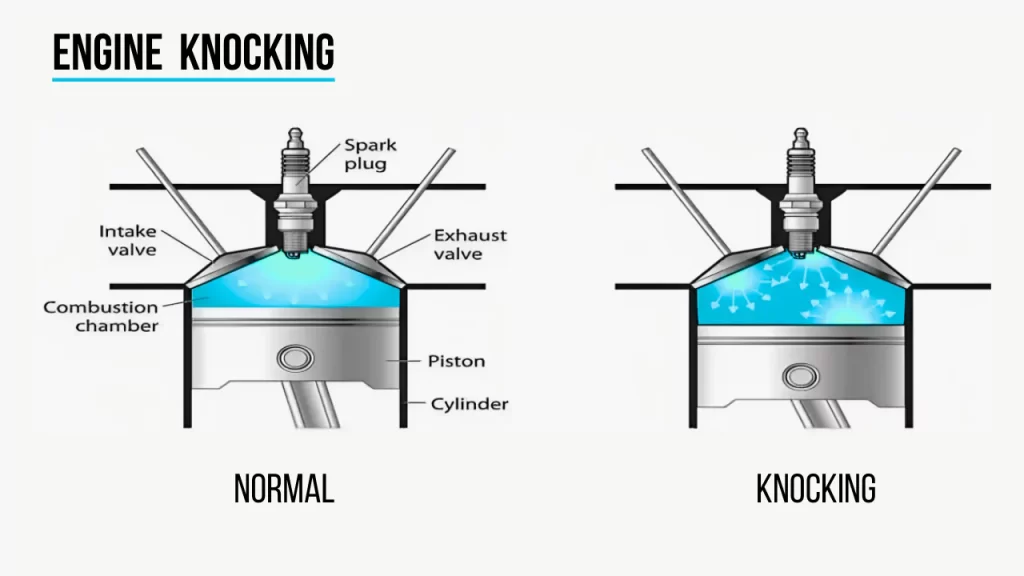When it comes to Malaysian made motorcycles, most people will probably only be acquainted with the Modenas brand. That comes as no surprise since Modenas has been around since the 90s and has established itself as a serious player in the local two-wheel segment.
But the reality is a lot different. Over the years, many Malaysian-made motorcycles have come and gone. Some have made an impact on the local market, while some have even disappeared overnight.
If there is one thing that motorcycle buyers can learn here is to always buy from a reputable company instead of going for the cheapest model.
The latest motorcycle brand to hit the local market is Moda and it is brand spanking new, having been launched just this month. Its first salvo at the local market is a 250cc super scooter called the Sporter S.
As journalists operating across the automotive industry, we are always careful to throw our weight behind a brand through our reviews for if a brand were to wrap up and exit the market overnight (something which has happened before), it would be detrimental to our reputation.
But Moda is something different. It is built and distributed by a company called AMI, which is short for AFY Mobility Industries Sdn Bhd. You may not be familiar with the company, but it has been operating for a while and is also the sole and exclusive distributor of Suzuki motorcycles in Malaysia.
Besides that, the people helming AMI have also previously been in charge of assembling and distributing Kawasaki motorcycles for the Malaysian market. So, they know what they are doing and have been in the game for longer than you can imagine.
So, yes, the Moda brand is backed up by some powerful figures in the industry and they are not the type that would disappear overnight, leaving you with a product that you can’t service or find parts for anymore.
First, a little backgrounder.
AMI calls the Sporter S a super-scooter, which is odd since that terminology has usually been used for scooters with a displacement of 350cc and above, but we will roll with it.
What we really like about the Sporter S is that it is not a Chinese kit motorcycle with a local twist. If you are not familiar with that terminology, it is something that happens quite often.
A number of new, “local” brands are guilty of buying kit motorcycles from China, taking them apart and reassembling them here to get past local laws and taxes. This means these motorcycles are now “semi-knocked down”, or SKD, and are ridiculously cheap.
There is nothing about them that is Malaysian made but they are definitely reassembled by Malaysian hands. One local company has only embossed the Made in Malaysia wording onto the clutch cover to make it seem like a Malaysian model.
You too can start such a business if you have some money laying around. A quick check on Alibaba revealed a 50cc dirt bike that is priced at just under RM500. There is a minimum order of five motorcycles, and we are sure that you too could add a Made in Malaysia wording somewhere if you traveled to China to negotiate with the factory and put in a substantial order of say 100 units.
To get past local laws and duties, you can simply rent a factory somewhere and hire a bunch of people to reassemble the bikes. It really is that easy, provided you have the money.
But that is not what AMI did with the Sporter S. Yes, there are parts from China, but rather than go to one single factory to buy a kit bike, AMI sourced parts from some of the best companies in China.
For example, the tyres of the Sporter S are from TimSun while the suspension system is from Yu-An. The radiator fan is from Panasonic while the drive belt is from Mitsuboshi (not a typo). The ECU, fuel injector and EFI system are from Bosch while the adhesives around the bike are from 3M. The spark plugs on the other hand are from NGK.
The Sporter S is a truly global motorcycle with parts sourced from all over the world. And just to nail that fact, the design of the bike is by a French design studio called Yacouba.
So, you can tell that the Sporter S is not your regular kit bike, AMI wanted to produce something special, and they have nailed it from the get-go.
Let’s get the important stuff out of the way.
Powering the Sporter S is a 244cc, single-cylinder engine putting out 24.8hp and 22.5Nm of torque. In typical scooter fashion, the transmission is a belt driven CVT unit, and almost all of its power is delivered at the upper end of the rev band, between 6000 to 8500rpm.
We saw a top speed of 148km/h while some other publications saw 155km/h. The engines were still new so we will re-explore that topic once the engines are properly worn in.
Suspension duties are managed by inverted telescopic forks with 80mm of travel up front and double adjustable shocks with 66mm of travel at the rear.
Brakes consist of twin 260mm discs up front and a single 240mm disc at the rear. Dual-channel ABS is standard as well and it can be switched off via a dedicated button on the dash.
So how does it ride?
Just as you would expect a scooter to ride. It is smooth, power delivery is good, and it is easy to manoeuvre in traffic.
But there are a couple of things that need to be mentioned here. First things first, at 186kg, it is quite a heavy scooter. So getting on or off the double stand takes some work especially if you on the shorter or weaker side of the spectrum.
Then there is the meter panel, the good thing is that it can adjust from dark to bright automatically depending on the time of the day, but essential readings such as the fuel gauge, trip meter and such is tad small. So, if you use reading glasses, this might be a challenge.
We do appreciate the fact that it comes with a tyre pressure monitoring system though, that makes it one of the few scooters that comes with it.
The other thing that needs to be said is that the suspension travel is quite short, and that means that the scooter can bottom out quite easily. So rather than absorbing bumps, it can sometimes crash into them, throwing you off the seat.
One thing that we felt needs to be looked into urgently by the team at Moda is the high-speed stability of the bike. At speeds of over 130km/h, the front of the bike does not feel planted which makes it feel a little nervous. You really should not be riding that fast but we did push it a little during a recent first impression ride. Perhaps that is just a matter of tuning, but it is surely something to watch out for.
But that is about all we have to complain about.
What do we like?
We like that the size of the scooter, it is not very big which means that it is easy to park in congested areas. We also like that it has a 10-litre under seat storage, which some have criticised for being too small. A full-face helmet may not fit, but a couple of bags of groceries surely will.
We also like the design of the bike. Eager eyes may have noticed the similarities with the Ducati Panigale, but the Moda pulls it off quite well, especially in red.
The body mounted rear view mirrors have also attracted some criticism since it limits customisation options. But we like it because it does not vibrate as much at higher speed, and they also fold neatly against the body, which means you can lane split through tight traffic without worry about scrapping the mirrors.
We also like the fact that the windscreen can be adjusted which means that the Sporter S is ideal for highway riding. The big rider and pillion seat also deserves special mention because they are not only great for all shapes and sizes, but also means that the Moda is well suited for long distance riding where you spend hours on the seat.
Should you buy one?
At RM17,888, the Sporter S is one of the most affordable “super-scooters” in the market. Sure, there might be cheaper ones but this takes us back to the opening of this article where we advise that it is better to buy a motorcycle from a known company rather than one that has not been around for very long.
The Sporter S does offer quite a bit for your money and it seems quite easy to live with on a day-to-day basis. We only spent 30 minutes riding it so perhaps a longer test ride will show us more about the bike later.
But from what we have experienced, the Sporter S has a lot to offer.
Specifications
Engine: 244cc, 4-valves, 1-cylinder, SOHC
Power: 24.8hp @ 8500rpm
Torque: 22.5Nm @ 6500rpm
Transmission: CVT
We like: Design, practicality, comfort
We don’t like: High speed stability

